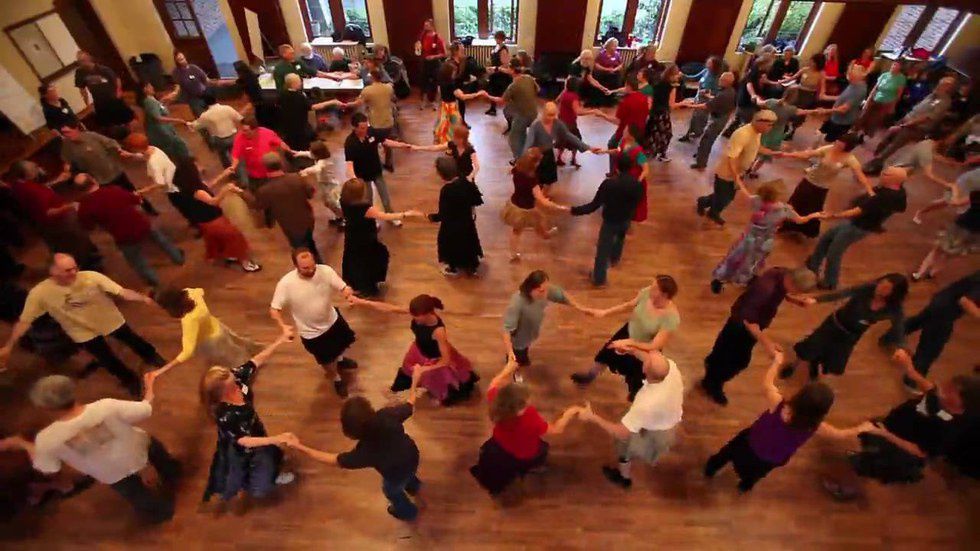If you know anything about me at all, you’ll know that dancing is one of my very favorite things. Dancing is the best. I never missed a single dance in high school. It seemed like a horrible waste to give up on the opportunity to spastically jump around when no one would possibly notice-- too loud, too many people all doing exactly the same thing. The perfect opportunity to let loose!
Coming into college, I’ve been searching for chances to dance the night away. One option is contra dance. It’s not quite the same thing as a high school dance party; in fact, the first couple dances were a throwback to sixth-grade square dancing in PE class. But once I threw myself into dancing and laughing and generally having a good time, it became something new and exciting. I was officially sold when one of my dance partners described the event as “French aristocratic hobbit dancing.” I mean, what could possibly be better than that?
For those of us who don’t mentally dwell in the Lord of the Rings universe, contra is more often described as New England or Appalachia folk dance. It has its roots in English, Scottish, and French dance styles of the 17th century, along with African influence from Appalachia. Contra dance events can be found around the world, but enjoy the most popularity in North America and the UK. “According to the Contra Dance Links website, contra dancing can be found in all US states except for South Dakota.”
Contra is performed in long lines of couples. It’s a social dance, where you can arrive without a partner and have the opportunity to meet fellow dancers throughout the night. Dances are led by a caller who teaches the steps at the beginning of a dance, and then call them out as the music is played and the dance is performed. As the dance goes on, couples move up and down the lines, in the process dancing with different couples and neighbors. The pattern of a dance takes 64 beats, which are then repeated.
Contra music includes Irish, Scottish, and French-Canadian folk tunes, with the fiddle being considered the core instrument. Other stringed instruments like guitar, banjo, and mandolin are played as well. At Oberlin Contra I often hear wind instruments and drums. The music is lots of fun, and really sets the feeling of a hobbit dance party!
























